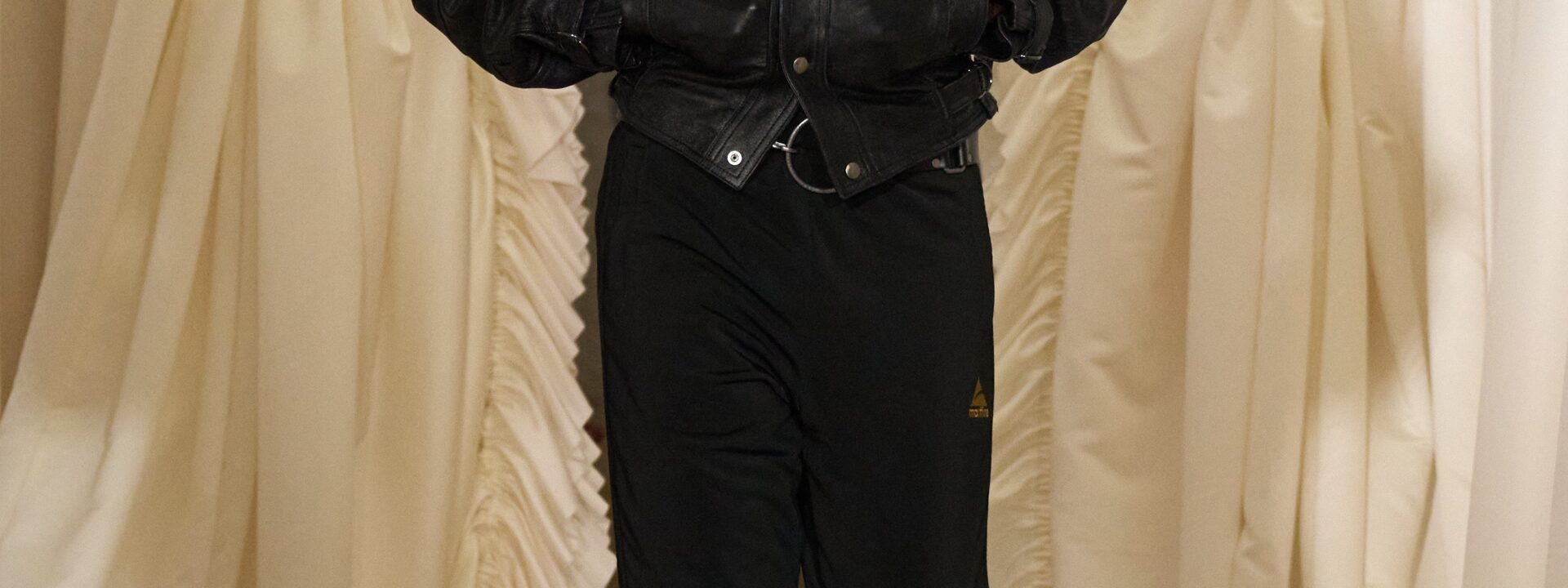When Martine Rose stages a show in London, it’s more than just fashion—it’s a community event, and the venue always makes a statement. This time, she had us lining up at a Job Centre in Lisson Grove, transformed into a tribute to market traders—the unsung heroes who’ve shaped London’s cultural fabric for generations. “These are the people who keep the city alive,” she said. “Small designers, vintage sellers, record shops, jewelers, hairdressers.”
In a nod to London’s resilient street vendors (a creative movement without a fixed home but endless ideas), Rose invited 22 traders to set up shop in the semi-abandoned building she’d rented. “It felt like the perfect chance to celebrate them—to make it about their work, not mine.”
But let’s be honest—it was still unmistakably Martine Rose. Upstairs, rooms draped in frilled white curtains set the stage for her latest collection. “It’s our version of a salon show,” she explained, though the suffocating drapes hinted at something darker. Twisting subculture and the fringes of “normal” into something entirely new is Rose’s signature. She redefines silhouettes in ways that eventually become mainstream—like pioneering oversized cuts back in 2013.
This season, she flipped the script: tight, body-hugging designs. “We’ve been playing with modern-sexy, creating tension in unexpected places,” she said. Take her plaid shirt reimagined as a snug mini-dress, flowing loose at the back. Or layered skirts with kilt pleats that shift subtly as you move.
The same approach shaped the menswear: tailored blazers, slimmed-down work pants, shrunken leather jackets, and ultra-skinny tracksuit bottoms (but not quite leggings). Even the ponchos had a twist—short in the back, a nod to barber shop capes seen in every London high street.
True to form, Rose sprinkled in cheeky details: frilly aprons tied at the waist, boxers with lace inserts, and bags printed with vintage adult magazine personals. The hair—long rocker manes and tight perms—added another layer of British edge, courtesy of stylist Gary Gill.
If it all felt like a throwback to the ’60s, ’70s, or ’80s, that was the point. Rose’s inspiration traces back to childhood trips to Kensington Market, a legendary hub for hippies, punks, and goths. Rumour has it Lemmy from Motörhead sold weed there, and Freddie Mercury once worked a stall before Queen took off.
“All of this,” Rose said, gesturing to the clothes and the bustling market around her, “is our love letter to Kensington Market. So many people found themselves there—it was where subcultures collided, where you discovered fashion, where you figured out who you were. We need that energy again. London needs it.”


